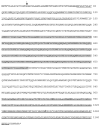Molecular Characteristics of Fat Body Protein 1 in the Oriental Fruit Fly, Bactrocera dorsalis
- PMID: 33918351
- PMCID: PMC8065459
- DOI: 10.3390/insects12040319
Molecular Characteristics of Fat Body Protein 1 in the Oriental Fruit Fly, Bactrocera dorsalis
Abstract
Bactrocera dorsails fat body protein 1 (Bdfbp1) cDNA was cloned (GenBank accession no. MT514270), and the complete 3,749-bp cDNA encoded a 1,152-amino acid protein. The phylogenetic relationship of dipteran fbp1s was analyzed. The sequence XP_028900815 from the insect genome project for Zeugodacus cucurbitae (LOC105219342) was proposed that two fbp1 genes were present in the sequence. The developmental transcriptional expression profiles were determined. In the larval stages, Bdfbp1 mRNA had significantly higher expression in the late third instar larvae compared with first, second, and early third instar larvae. In the pupal stages, the highest expression of Bdfbp1 mRNA was found in the newly pupated pupae and then decreased with age. In the fat body of female adults, Bdfbp1 was highly expressed in newly emerged samples and decreased rapidly over the following three days. In the fat body of male adults, Bdfbp1 was highly expressed in newly eclosed samples. RNAi treatment decreased the expression level of Bdfbp1 without statistical difference. However, RNAi treatment significantly decreased the rate of eclosion. These results suggest that Bdfbp1 may function as a storage protein and be associated with adult eclosion.
Keywords: Bactrocera dorsalis; eclosion; fat body protein 1; transcriptional expression.
Conflict of interest statement
The authors declare no conflict of interest.
Figures






References
Grants and funding
LinkOut - more resources
Full Text Sources
Other Literature Sources
Research Materials
Miscellaneous

